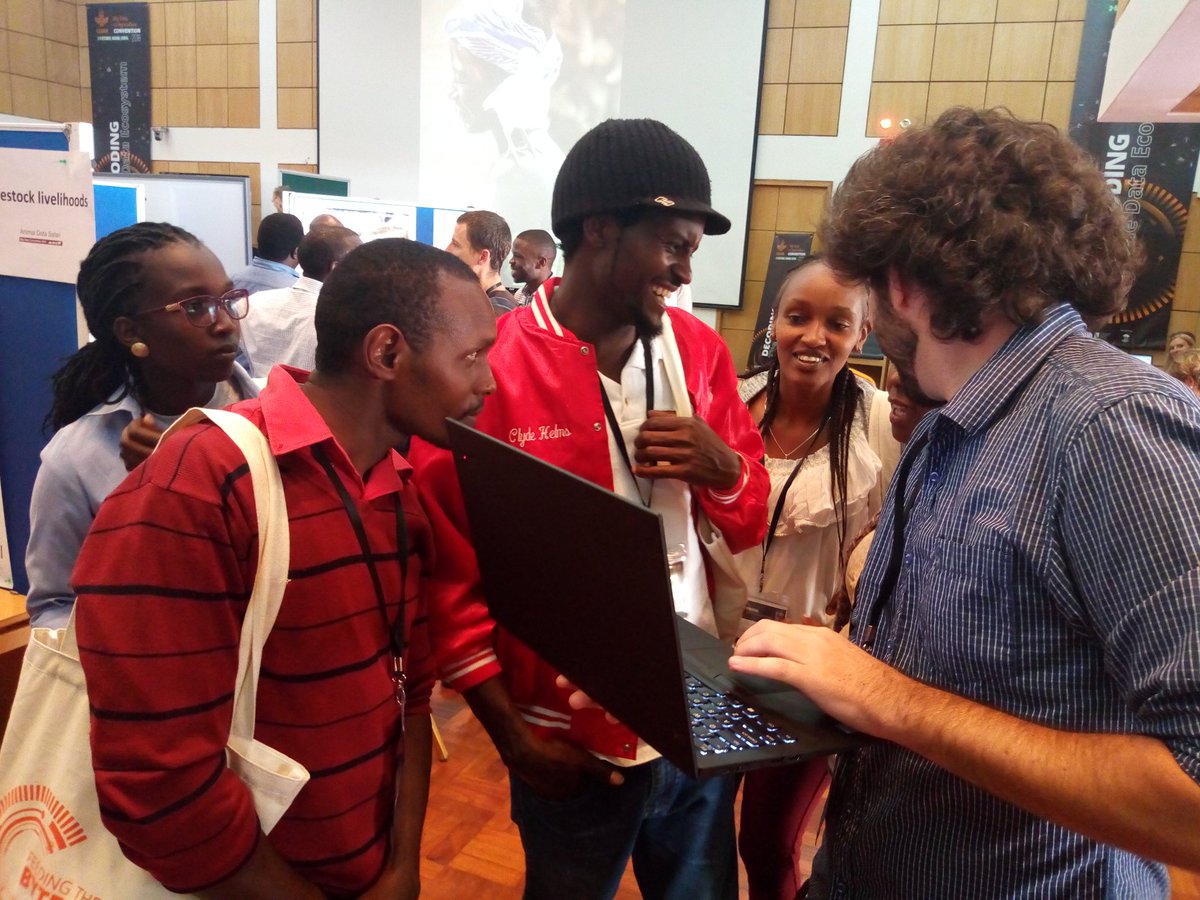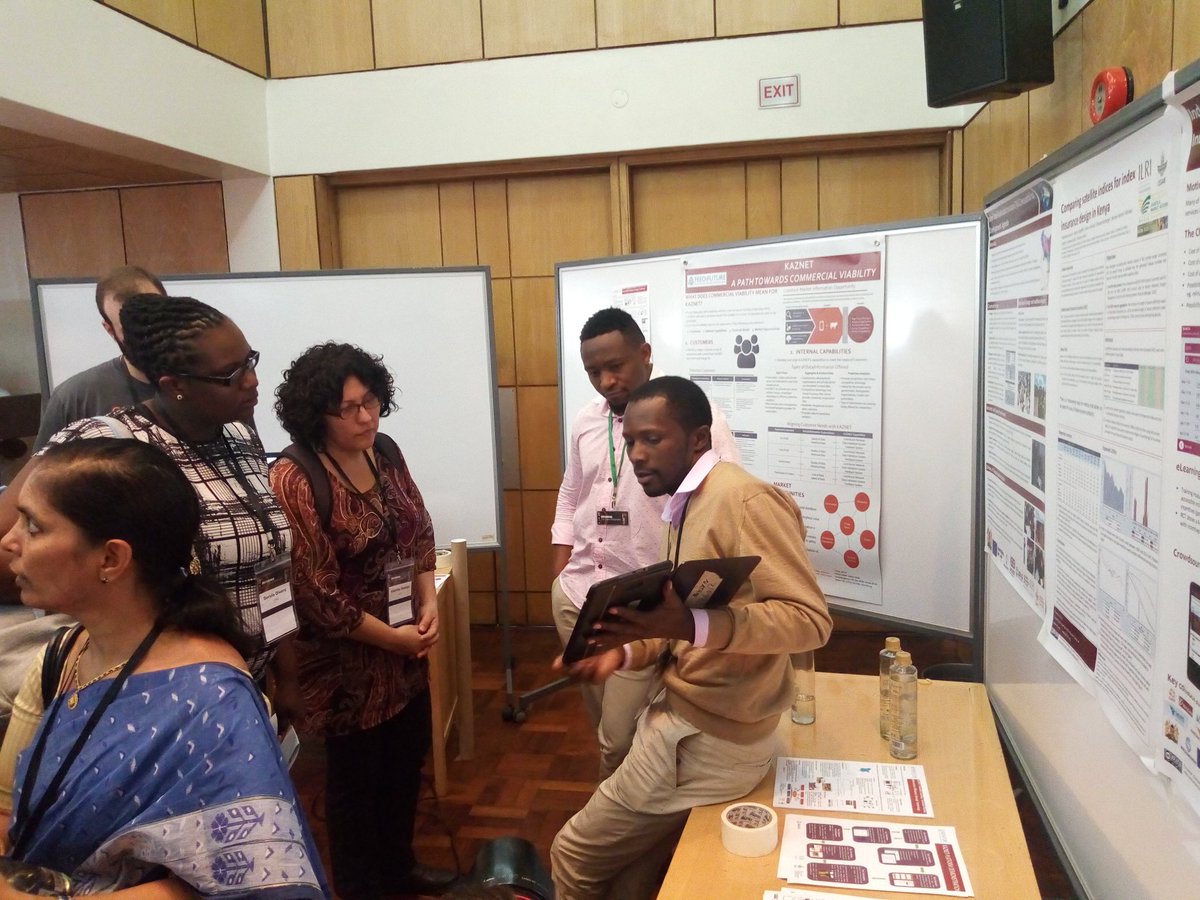
An animal data safari at the 2018 CGIAR Big Data in Agriculture Convention
Last week, on 4 October – World Animal Day – ILRI’s Peter Ballantyne coordinated an interactive ‘mini-safari’ at the Big Data in Agriculture 2018 convention to showcase and demonstrate data-driven opportunities for and from livestock and fish ecosystems.
Comprising a mix of displays, stands, live demonstrations and short flash talks, the session exposed participants to various initiatives, tools and applications from the livestock and fish sectors (spanning genomics, diseases, early warning, extension, analytics, mobiles, sensors, profiling, index insurance, environmental assessment, policy choices, open access and open knowledge, and more).


The safari aimed to provide insights into the challenges of animal agriculture and the ways research, technology and development organizations are decoding data to create insights and meaning leading to big opportunities from data. Some twitter coverage is at: #animaldata
Twelve short ‘flashtalk’ presentations were given during the safari:
Crawford Revie, University of Strathclyde: D3F – Differential Disease Diagnoses Framework. Illustrates how D3F, an ontology-aware data management environment, has enabled us to scale up an mHealth app that covered 12 common diseases affecting cattle in Ethiopia to encompass around 30 diseases of importance across six livestock species in sub-Saharan Africa. In addition to supporting differential diagnoses and passive surveillance across endemic livestock diseases, the underlying ontology provides the ability to pass data to and integrate data from the wider linked open data (LOD) ecosystem to support improved animal welfare and sustainable agricultural practice. He also demonstrated EDDiE – An mHealth Android app for livestock disease diagnosis and passive surveillance. [more information]
Mark van Wijk, ILRI: The role of livestock in smallholder livelihoods: How we use the ever-expanding database collected within the RHOMIS initiative, now more than 18000 smallholders in 22 countries, to quantify this. [download his presentation; more information]
Alex Tilley, WorldFish: Leveraging ICTs for small-scale fisheries [download his presentation; more information]
Marie-Christine Meunier-Salaün, INRA, France: The Animal Trait Ontology for Livestock: a shared knowledge tool for phenotypic data exploitation in an open data world [more information]
Nathan Jensen, ILRI: Crowdsourcing information in the drylands. To address data scarcity in the drylands, we have developed a flexible micro-tasking platform which allows users to create and distribute tasks to an open network of contributors. The platform was successfully piloted with pastoralists to collect information on livestock markets in remote regions of Kenya and is now being extended to include household-submitted data on child health and other applications [download his presentation; more information]
Bernard Bett, ILRI and Absolomon Kihara, Badili Innovations: Electronic Syndromic Surveillance System for Livestock Diseases in Kenya. How a mobile phone-based syndromic surveillance system has been used in parts of the north and northeast Kenya to collect and process data on livestock diseases at the community level. It also describes how the system has been expanded to capture meat inspection records in abattoirs and types and volumes of veterinary drugs sold in selected agro-veterinary shops. It further highlights some of the successes and challenges that have been encountered in the course of its implementation [download the presentation; download a poster; more information]
Chandra Biradar, ICARDA: Digital augmentation to accelerate agroecological Intensification with focus on animals in farmlands [download his presentation; more information]
Louise Donnison, SEBI/LD4D:Improving livestock data quality – the SEBI approach [more information]
Mike Phillips, WorldFish : Leveraging Big Data and analytics to strengthen livelihoods and enhance food and nutrition security by improving aquaculture and fisheries: Emerging areas for new partnerships [download his presentation; more information]
Catherine Pfeifer, ILRI: Tools not toys: CLEANED livestock environment app transforms data to decisions [download her presentation; more information]
Stephen Oloo, ILRI: Automating DHS livestock data requests to provide insights about livestock ownership across Africa [download his presentation; more information]
Francesco Fava, ILRI: Integrating local crowdsourced and remotely sensed data to characterize rangeland resource use in extensive pasturelands: To support improved rangeland resource management and monitoring for nomadic pastoralists in northern Kenya, we used a task-based mobile application to incentivize pastoralists provide more than 100,000 surveys containing information on local rangeland, water and livestock resources. In this contribution we explore the potential of combining this information with remote sensing data for improved characterization of rangeland resource use and accessibility through integration of local socio-ecological knowledge into land cover mapping methods [download his presentation; more information]
Other resources shared at the safari included:
- Tapping social media data to enhance livestock production in Kenya
- African Dairy Genetic Gains dairy mobile phone app for Tanzania farmers
- Livestock Data for Decisions Community of Practice
- ARES – Navigating and mapping livestock repository knowledge using CGSpace and MEL
- Biases in crowdsourced livestock data and its impact on modelling tick distribution in semi-arid savannas of Kenya
Read a blogpost from the meeting by the SEBI team
Beyond the safari, ILRI’s Andrew Mude gave a related presentation on democratizing data and transforming service provision in the pastoralist drylands. His talk highlighted some of the ways that mobile phone applications are being used to tackle the challenge of data and information scarcity that is a significant constraint in the remote, sparsely populated and infrastructure drylands where data collection is otherwise a very costly endeavor. Building off the innovative index-based livestock insurance program using satellite data to provide livestock herders with insurance against drought-related livestock mortality, Andrew shared one example each of how mobile phones are being used as 1) a data-provisioning tool, 2) an extension and information exchange tool, and 3) a service delivery tool. [download his presentation].
Post compiled by Peter Ballantyne


















